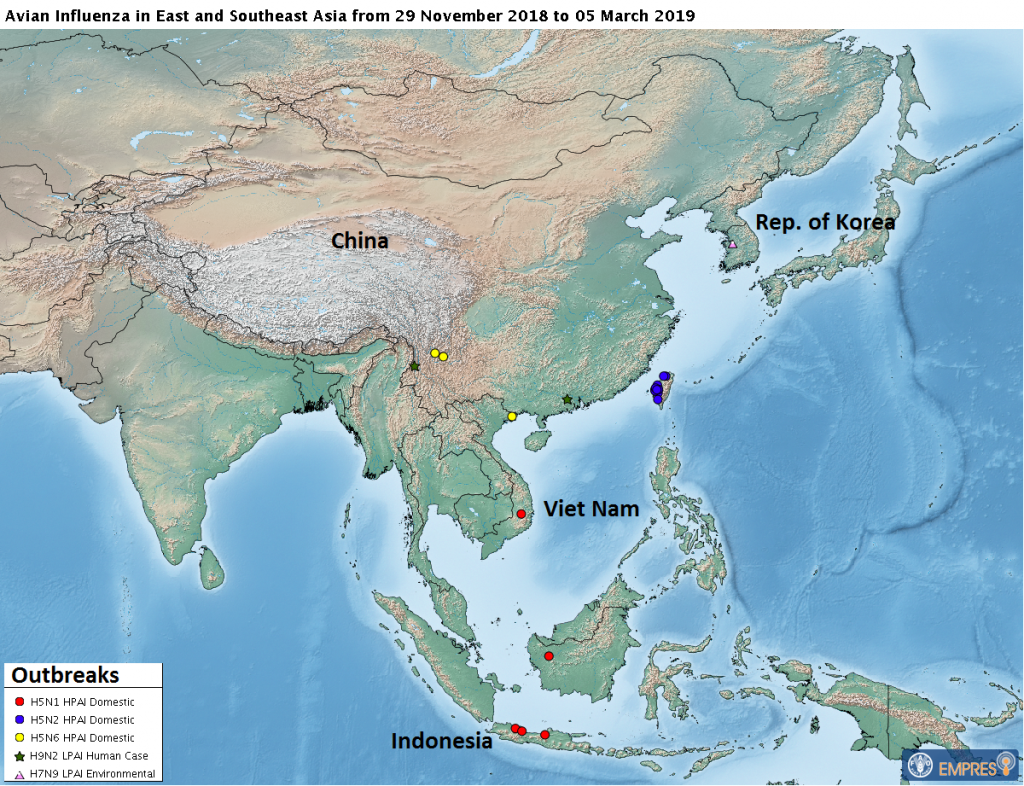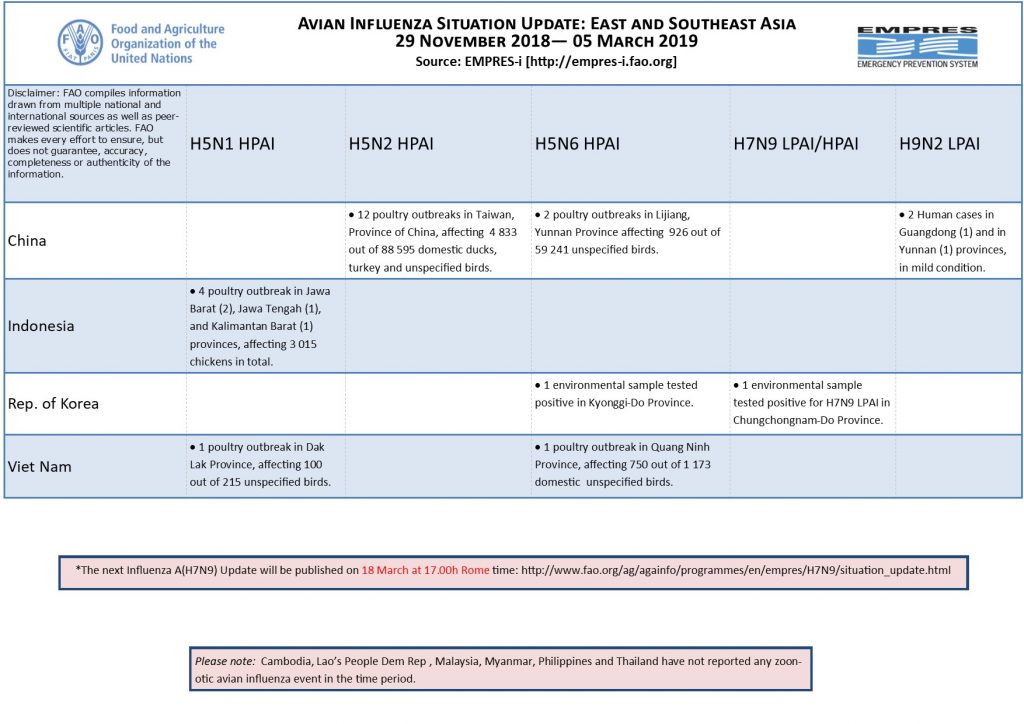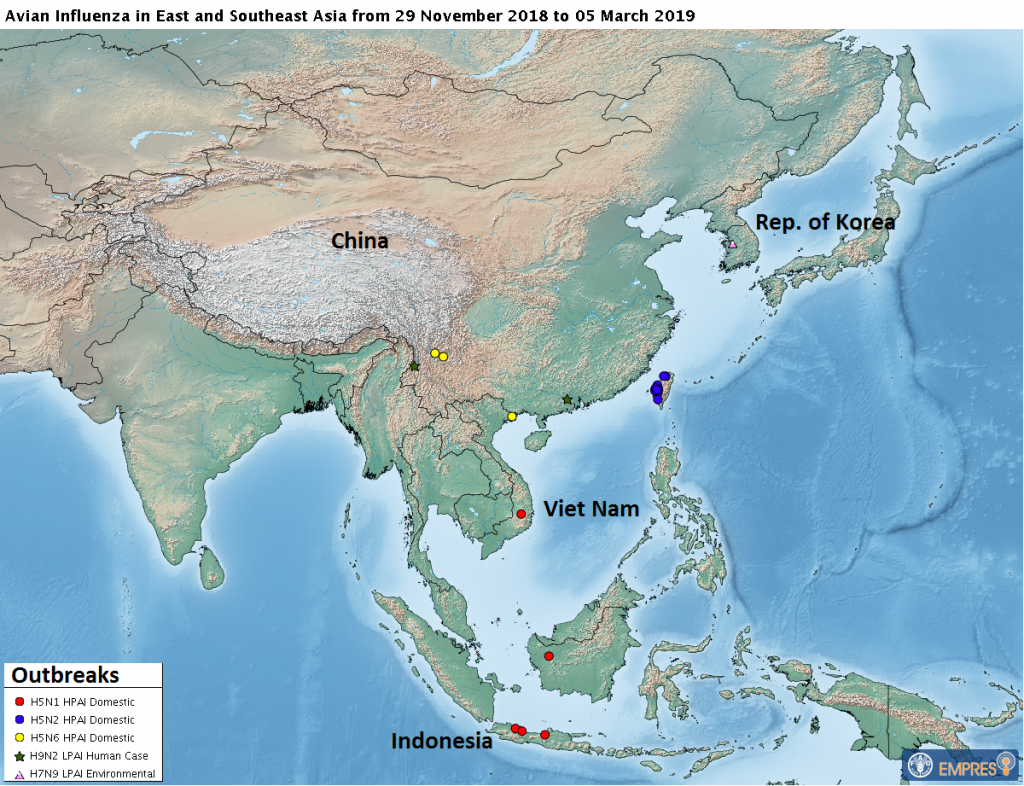FAO/EMPRES-AH is constantly monitoring the avian influenza situation worldwide and compiles information from multiple national and international sources as well as peer-reviewed scientific articles. Close collaboration with country and regional offices, the implementation of avian influenza field surveillance projects and networks of expertise like the OFFLU OIE/FAO provide access to timely information on outbreaks, surveillance findings and genetic similarities of circulating viruses or their virological features. This information is stored in the EMPRES Global Animal Disease Information System (EMPRES-i), a database that can be accessed online at empres-i.fao.org.
During the period 29 November 2018 to 05 March 2019, five different avian influenza virus subtypes have been reported in poultry in South-East Asia, of which three were highly pathogenic (H5N1, H5N2 and H5N6) and two low pathogenic (H7N9 and H9N2). H5N1 HPAI caused one unspecified poultry outbreak in Viet Nam, and four outbreaks affecting domestic chickens in Indonesia. In Taiwan, Province of China, 12 outbreaks in poultry were confirmed to be caused by H5N2 HPAI affecting a range of domestic species such as chickens, ducks, and turkeys. H5N6 HPAI caused one poultry outbreak in Viet Nam and two outbreaks in China, affecting domestic birds. One environmental sample tested positive for H5N6 HPAI in the Republic of Korea. In China, two human cases were confirmed to be caused by H9N2 LPAI. In the Rep. of Korea one environmental sample from wild bird feces tested positive for H7N9 LPAI, no evidence so far that the virus is closely related to the ones circulating in China.
Highly pathogenic H5N1, H5N6 and H5N8 viruses have demonstrated the ability to spread also via migratory water birds. However, during the period 29 November 2018 to 05 March 2019, no wild bird cases were reported in East and Southeast Asia. The emergence of H7 sub-types other than H7N9 (e.g. H7N2, H7N3) in domestic duck populations in China warrants close attention and is a cause for concern given the close genetic relationship between domestic ducks and other wild Anatidae. Once adapted to domestic ducks, the transmission of these viruses to and among wild Anatidae populations could occur. However, the extent of the spread of these viruses is currently unknown. We consider avian influenza activity to be higher in the period December to March, thus reports of outbreaks in poultry or detection in wild birds and humans are expected to decrease over the coming months in the region.







